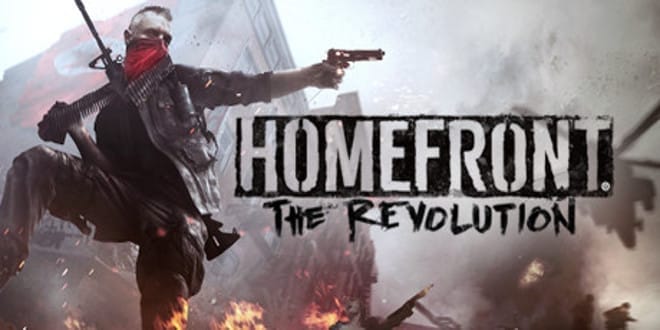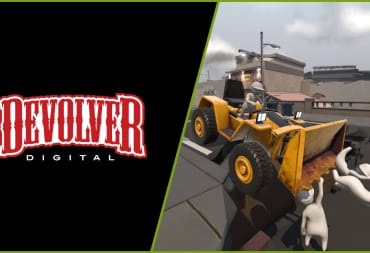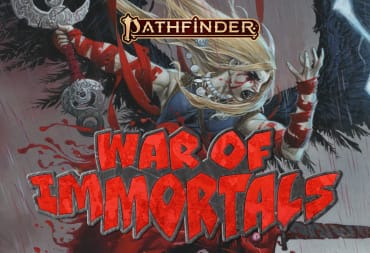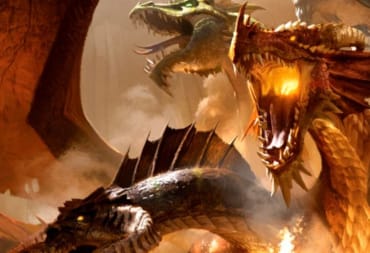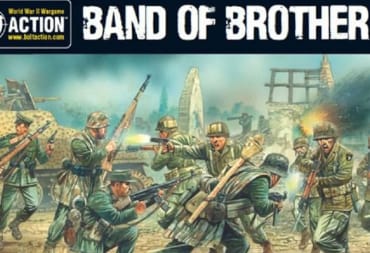Homefront was an interesting anomaly. A hotly anticipated AAA shooter developed by Kaos Studios, a small studio acquired by THQ after they gained notoriety for creating the Desert Combat mod for Battlefield 1942. When Homefront released most everybody was in agreement that it had a lot of good ideas and that it failed to capitalize on any of them. Despite mixed reviews, THQ greenlit a sequel. After THQ declared bankruptcy in 2012 the rights to Homefront: The Revolution were sold to Crytek. Then in 2014 Crytek announced they were restructuring amidst financial troubles and would be selling the rights to Homefront: The Revolution to Koch Media, who handed it off to their subsidiary Deep Silver, who would open up Dambuster Studios and bring in the Crytek UK employees formerly working on the game to finish it. It's safe to say this is something of a development hell situation as a title card so much as states at the close of the game.
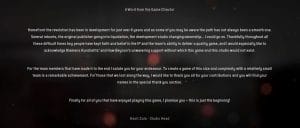
Unfortunately, for all the obstacles the team surmounted to deliver this game to market, it suffers from the same problem as its predecessor. An abundance of great ideas and a failure to wrap those ideas in a solid technical package. The day one patch for Homefront: The Revolution aimed to bring the FPS up to 30 and fix bugs, but even with the update in place the PS4 version of the game would frequently drop below the 30 fps mark when things got too busy and especially in a particular late-game area filled with poison gas. I also experienced many glitches both minor and major, and the worst offender actually prevented me from completing the game's campaign. In the final mission, there is a truck carrying a SAM battery that you have to escort to a deployment point. However, the truck got stuck on a piece of game geometry, and I got a checkpoint with it trapped in this position. No amount of explosives or finagling could unlodge it wish as I might. The minor glitches included NPC's attempting to walk through walls to no avail, enemies despawning before my very eyes and various issues with collision detection and AI pathfinding.
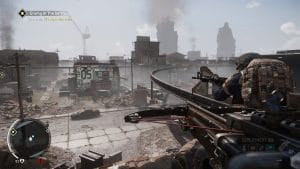
Let's roll the wheels back to the beginning. Homefront: The Revolution paints a grim picture of America's future. After involvement in conflicts in the Middle East, a vaguely defined entity belonging to these countries acquires nuclear weapons and brings the fight to America. After losing a series of wars the U.S. is in shambles and North Korea steps into the global market to fill the vacuum left by the world's largest superpower crumbling under its own weight. As they begin to develop and dominate many global markets, the U.S. becomes increasingly dependent on their exports eventually acquiring a majority of their military hardware from North Korea. North Korea then offers to step into the U.S. under the guise of aiding America's failing economy. However once they hit U.S. soil, they deactivate all the weapons they sold to the military (Not sure how that functionality passed inspections). So now the U.S. is under a tyrannical North Korean occupation, and you play as a freedom fighter in Phillidalphea. The story is a pretty standard Red Dawn-esque plot much like the original Homefront, but it gets the job done. There are a number of characters in the story, and they all play well against each other and are different enough to stand out. Homefront: The Revolution frequently dips its pen into the inkwell of cliched "Kill or be killed, war is hell" versus the "Violence only begets violence" camp of morality specifically through the relationship between two of the games main characters. I think a feature that could've turned this otherwise overdone style of story into something more fulfilling would have been giving the player agency to complete objectives with either non-violent or violent means, but sadly this never presents itself.
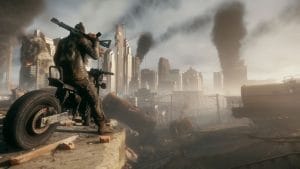
Throughout Homefront: The Revolution, you will try to loosen the Korean grip on the city via story missions and different open world sidequests a la the Far Cry series, and ultimately that becomes a very apt comparison. Your main sidequests are strike points. Key locations in the city that you must wrest from the occupying forces, much like the outposts of Far Cry. A few other side missions involve finding a way up buildings in little platforming sections much like the sidequests in many Ubisoft games. Ultimately Far Cry is a good measuring stick. If you enjoyed the open world FPS design on display there, you would probably feel at home in Homefront: The Revolution, but it also became a point of contention for me. It's a good base to build the design of a shooter from, but I've already played Far Cry and grew tired of the style there so having to tackle a lot of the same gameplay loops here began to grind on my nerves during my time with the game. The icing on the cake comes in the form of the platforming, easily the game's worst feature. First-person platforming is already difficult to pull off, as we've seen time and time again in video games brief tenure. It's difficult to judge distance with a first person camera and couple that with dodgy ledge grabbing mechanics and you've got an excellent recipe for a crap sandwich. The amount of teeth grinding that I endured as I repeatedly failed to grab a ledge and had to restart an entire platforming section made me consider invoicing Deep Silver a dentist's bill.
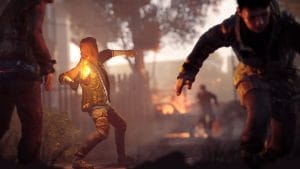
I want to switch gears here a little bit because Homefront: The Revolution's lows are low, but it's highs rise to equal degrees of extremity. One of my favorite features is the different zones you move between. The red zones represent the destroyed areas of Philly. Bombed out afterthoughts of a past conflict. In these regions, the Koreans don't patrol as heavily, but they will shoot on sight. Pretty much your standard shooter area. The yellow zones are the areas still occupied by the civilian populace, and they are much more heavily defended forcing you to adopt stealthier tactics lest you want an entire division of the KPA bearing down on you. The atmospheric shift the game took on the first time I entered one of the yellow zones was my favorite moment of the experience. Going from firefights in a destroyed metropolis to slinking through the rain-soaked streets avoiding cameras and patrols was an excellent paradigm shift. Taking on large groups of soldiers is not a good idea in the early game too. Your health can be drained quite quickly, and until you get some better equipment, it will be tough to take out some of the games beefier enemies. This forces you to adopt guerilla tactics in a way reminiscent of the cult classic Freedom Fighters and kept things fresh as I navigated objectives between red and yellow zones.
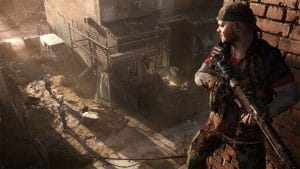
Weapon customization is another high point of Homefront: The Revolution although I found the weapon selection a bit lacking. Each weapon comes with three "conversions" that can be swapped on the fly to make your gun fit a different combat purpose. The battle rifle, for instance, can be converted to a bolt-action sniper rifle and a firework launcher. You can carry your pistol and two other weapons at any given time theoretically giving you a loadout to tackle nine different combat scenarios. A lot of the conversions don't drastically alter the function of the weapon as much as they keep things interesting. You can also purchase a number of attachments for your weapons that can be swapped out on the fly. Tinkering with my loadout to fit whatever engagement I was about to enter was great and managed to mix things up enough to keep them from being too repetitive. With six weapons (including the rocket launcher which has no conversions) you've got 13 different weapons to play with. You will most likely acquire all the different arms and conversions about halfway through the game, so the selection does get a little stale by the time Homefront draws to a close.
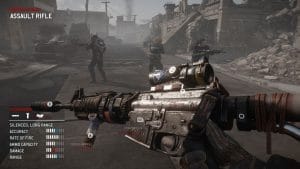
The core shooting is a mixed bag. Some weapons feel great, and others feel like pea shooters. Some weapons have enough recoil to feel meaty and force you to adjust, others climb to the heavens after unleashing a short burst of rounds. Enemies react nicely to being shot and have decent physics attached to them but the health system is partially regenerating and then using a medkit for the rest, a system which I'm not too fond of. I'm going to have to defer to the Far Cry yardstick again here. If you enjoyed the core gameplay of the recent Far Cry entries, you'd probably enjoy what's on offer in Homefront: The Revolution.
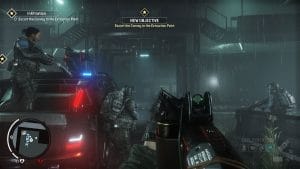
Homefront: The Revolution also contains a co-op multiplayer mode that I didn't feel compelled to spend any more time with than was requisite to write this review. Mostly because they are just standard missions that can be run with a group of people and you'll have to do more waiting around than playing. Wait to find a match. Wait for everybody to adjust their loadout and ready up. Wait for the level to load. Wait some more for a timer to start the level. If you fail the mission, it has to load again, and it takes just as long as the initial load-in for some ungodly reason. It's a tacked on feature that can be ignored.
Overall, Homefront: The Revolution is a game that I would have a hard time recommending right now. There's a solid shooter in there if you've enjoyed similar titles, but the technical issues it has are unpalatable, especially one as egregious as to keep me from completing the game. If it gets patched up and drops in price a little bit, it would be a much easier sell, but as it stands currently I can't give it the full thumbs up, and that makes me sad considering the hell the dev team was dragged through to bring it to us.
Homefront: The Revolution was reviewed on PlayStation 4 with a code provided by the publisher. It is also available on Steam and Xbox One.
Review Summary
Homefront: The Revolution could have been something better with its weapon customization and unique environments, but it fails on the technical front.
(Review Policy)Have a tip, or want to point out something we missed? Leave a Comment or e-mail us at tips@techraptor.net
